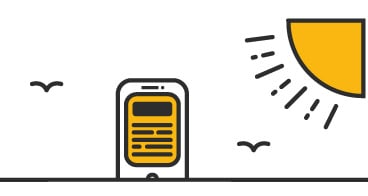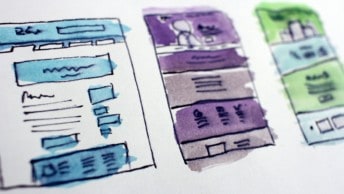I’ve noticed a cynicism about the role of UX within advertising from the broader UX industry.
After a year in a large agency I can say that yes, it’s true – we don’t always get the chance to iterate a product, and research isn’t always as valued as it should be. On the other hand, we’re pushed to create usable, experiential products quickly, which have honed my intuitive design skills in ways I never expected. In advertising, you’re part of the creative process, dreaming up innovative activations and learning that every project is a completely new challenge.
1. Debating is still alive and well
Remember debating at school? It was all about constructing a solid argument, gathering all the research to understand the problem in detail, and looking at a question from every side possible. These skills are the best persuasive tools to have at your disposal. If you can learn to hold your own in a debate then you can hold your own in an agency. This has led me to the idea of starting my own meetup, DigiDebates, encouraging young digital enthusiasts to develop debating skills and learn to argue their rationale in front of a panel of industry experts.
2. Make the user the hero of your story
If you’ve ever heard of the Hero’s Journey, you’ll know that this is the classic storyline (think Star Wars, Harry Potter, Lord of the Rings). Most companies treat their brand as the hero of their story. Try switching your thinking; view the user as the hero and the brand as the gift (ie: Light Saber, Wand, Ring) that allows the user to solve their problems, pushing them through their own unique story arc and become the hero of their story.
3. The design is not the detail, the detail is the design
The way things are moving, we need to design for emotional engagement. This means bringing a magnifying glass up to the details of a product and seeing how to unify the many moving parts into something cohesive and appealing. Create design principles at the start of a project and look for ways to achieve them holistically. When the bigger picture has been acknowledged, it’s time to go granular – from the tiny animation that validates the purpose of the experience, to the microcopy with personality.
4. Compromise is inevitable + integral
You have a brilliant solution to a problem, which you present clearly with perfect reasoning. There’s no possible way anyone could look at this solution and think there’s a better way to do it. But trust me, despite reason and logic there will always be certain things your client will want done their way, and with no room for movement. And you’re going to have to accept this. When you work as part of a larger agency, learning when the fight is over is integral to maintaining a good client relationship where their trust in you grows over time. You can’t win every battle, so learn how to pick your battles.
5. Content in context is king
If we’re serious about designing an experience, we need to think about the context in which the content is presented. This can include anything from dynamic content for time and location to more complex contexts such as mindset. Look at the data you can collect from users and see how this can be used to create a personalised experience that speaks to the user’s physical and emotional environment.
6. Design the right product
Just like any UX die-hard, I’ve heard the mantra “design the right product” a million times. But experience over the past year of coming into projects midway through has altered my understanding of this. You don’t always get to set the parameters of the product or conduct the research. Sometimes you don’t even get a research allowance on the project (shock, horror!). Despite this, you can still design the right product. Use any data at your disposal to interpret insights. Use a mix of ethics and intuition to continuously drive your product in the direction you feel will be most useful. It can be slow, and it can be argumentative, but it’s also well worth it!
7. Collaboration – not as easy as it sounds
I used to think working in a creative field would mean everyone would be as passionate and motivated about every project as I am. I like to talk everything through and debate the details, and didn’t anticipate people getting defensive about their way of working, or that they would prefer to do their bit and then hand it over with very little discourse. Learning how to make that work—in a way that best suits those individuals but still gets the best out of the team—has been a big learning curve.
This article was originally published for UXmas – an advent calendar for UX folk. Catch up on all 24 posts at uxmas.com.











